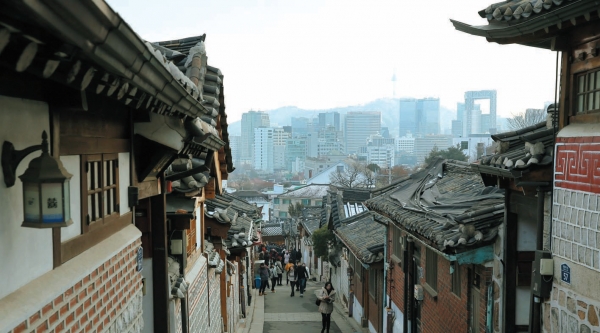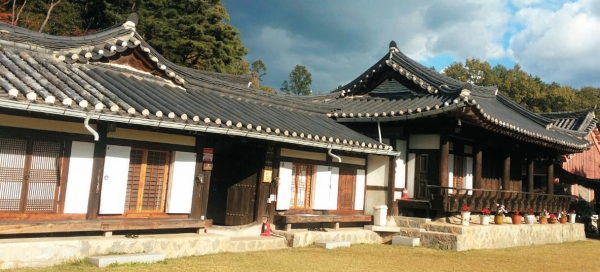
On your way from Incheon International Airport to downtown Seoul, you can see the Han River on your left and many modern apartment building clusters overlooking both sides of the river. It has been less than 50 years since inner-city apartments became the main form of housing for Koreans, due to relatively little residential space for each person caused by limited land size compared to the population.
Before Seoul became modernized, people usually lived in individual standalone houses with dark-grey roof tiles, while those in rural areas lived in similar houses with thatched roofs which had to be replaced with new thatch every year. Highrise apartment buildings emerged as demand for residential housing grew in newly industrialized urban areas.
You can see a similar type of roof on traditional houses in Japan and China, but a difference lies in the line of the roof. The degree of the curve formed by the inverted arch line on the roof of a typical Korean house measures somewhere in the middle among the styles of the three countries.

Amid clusters of high-rise apartment buildings, there remains a compound of traditional Korean roof-tile houses preserved near Gyeongbok Palace in downtown Seoul called Bukchon. This protected heritage area of Bukchon gives visitors a good understanding of Korea’s past housing culture. Unlike modern apartment designs that usually come with one bedroom for each member of the household, traditional Korean houses with hot stone-heated floors or ondol heating system would have all family members sleep collectively on the same floor with little recognition of individual space. Such housing culture provides historical context for understanding the group-oriented mindset of Koreans, placing what is good for the group before what is good for the individual.
The thatched roof seen in rural areas was rather plain, but sometimes vines of gourd or pumpkin would find their way onto the roof and bear fruit. Such combination of a manmade house and natural vegetation represented good harmony between men and nature, and is often used as a symbol of rural lifestyle that evokes nostalgic sentiment among the older Korean generation.
* 《쿨투라》 2018년 11월호(통권 53호) *


